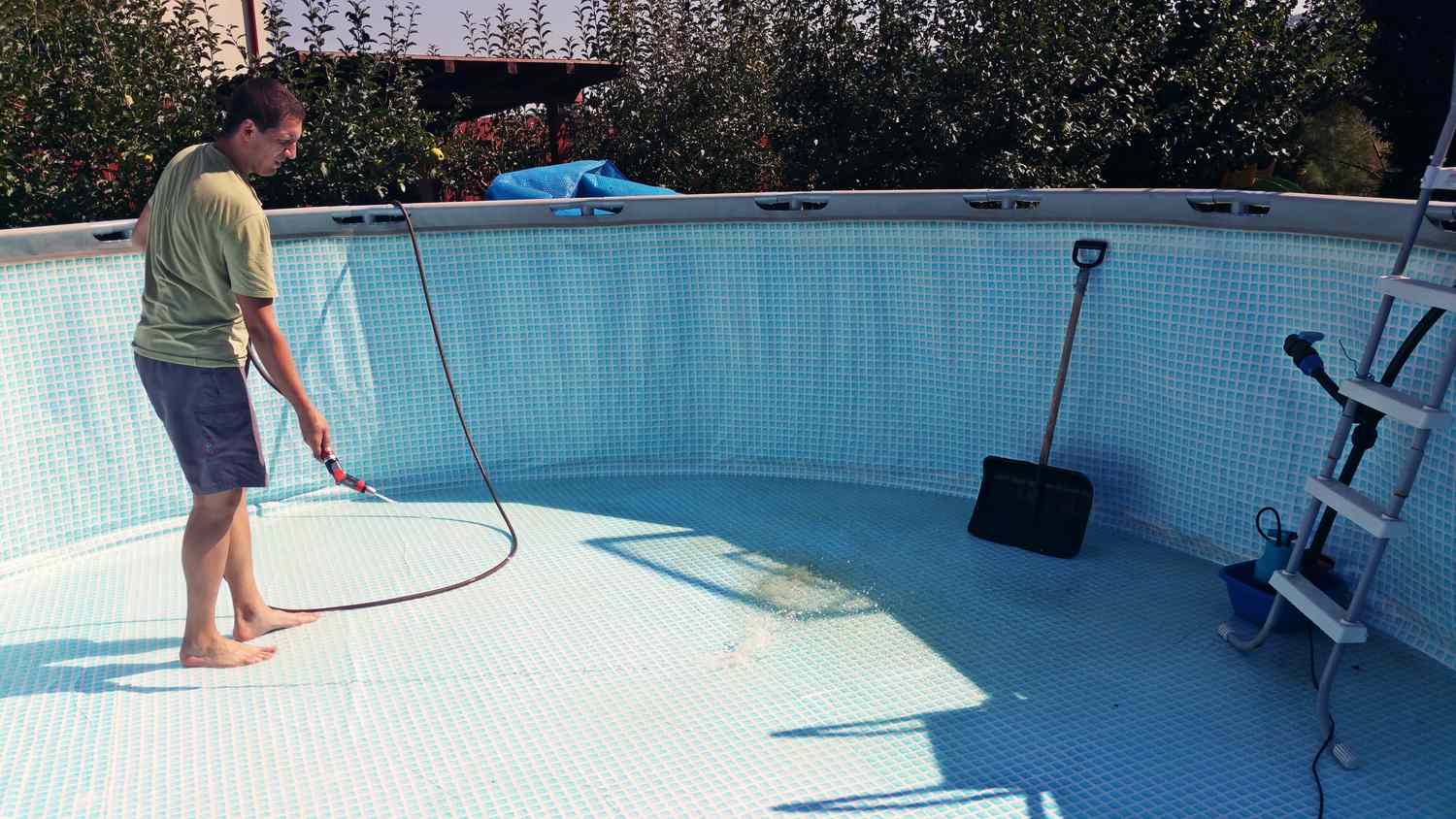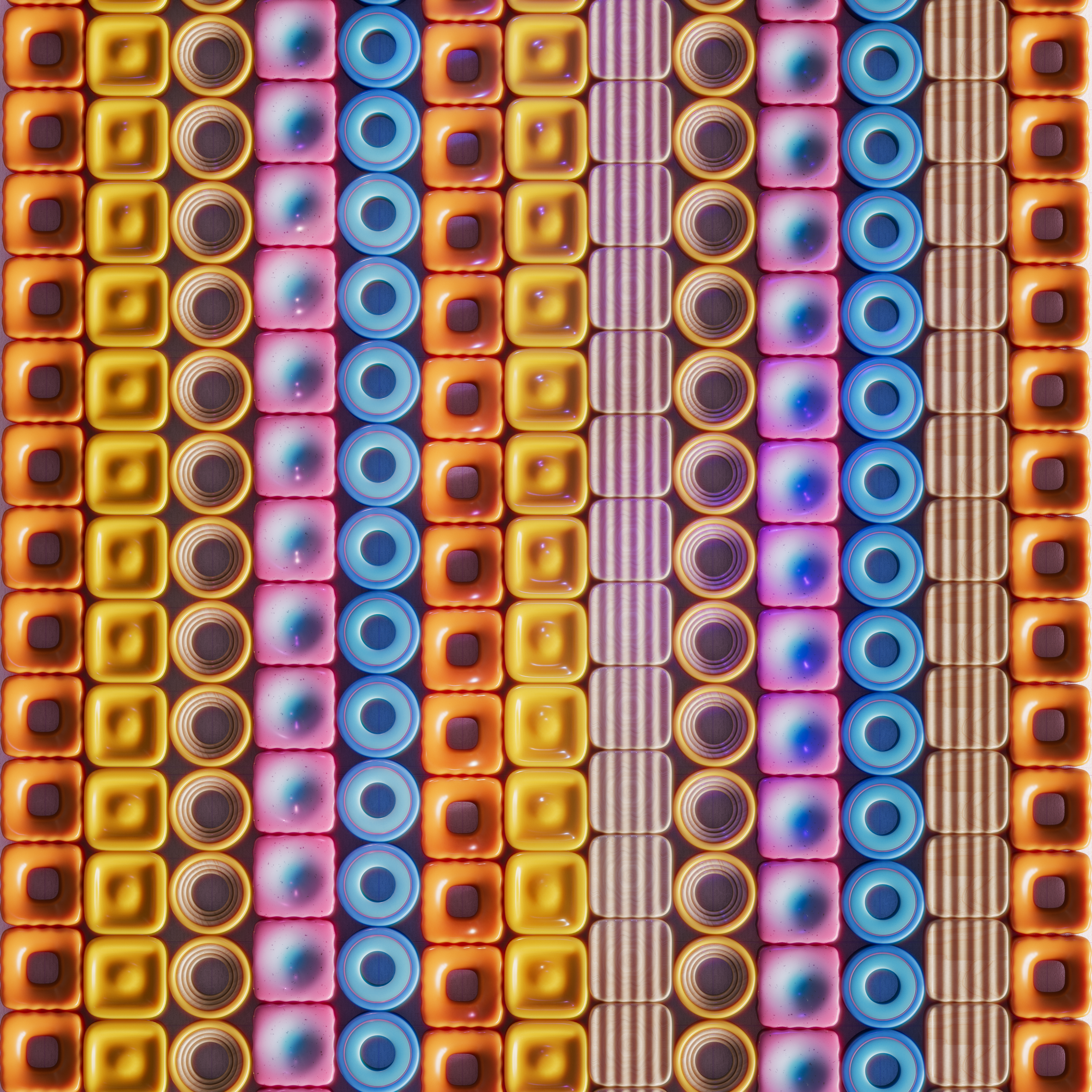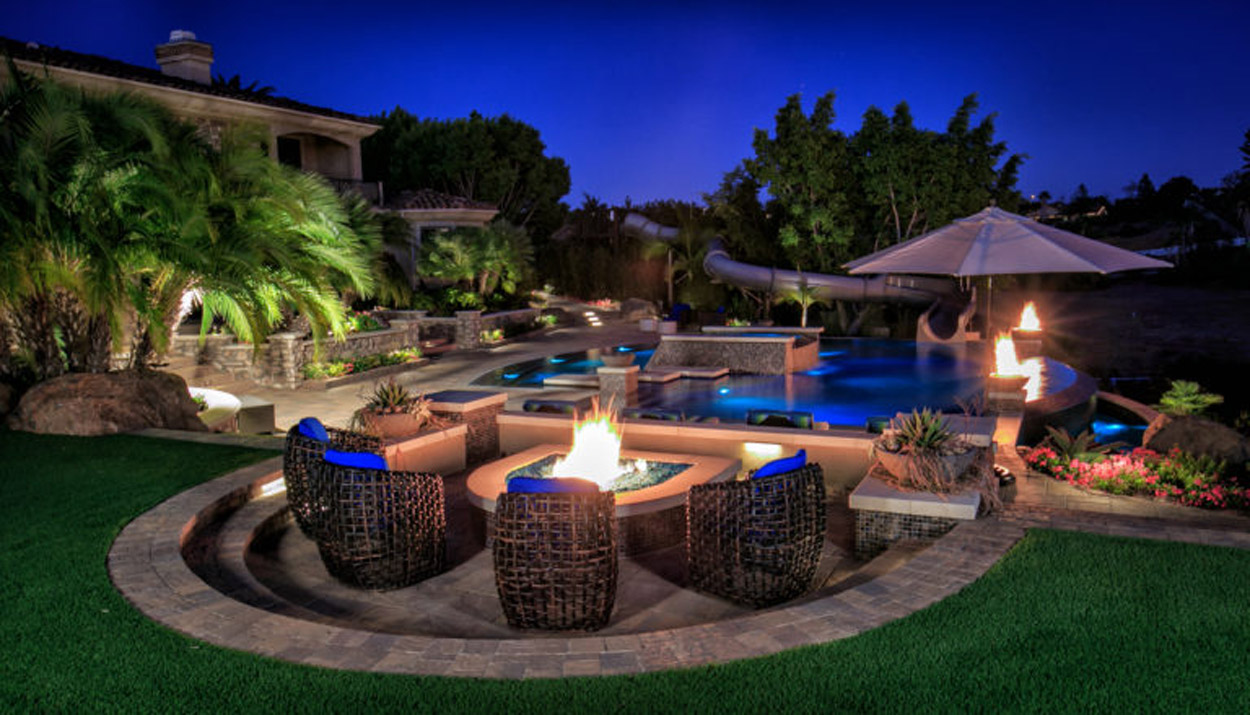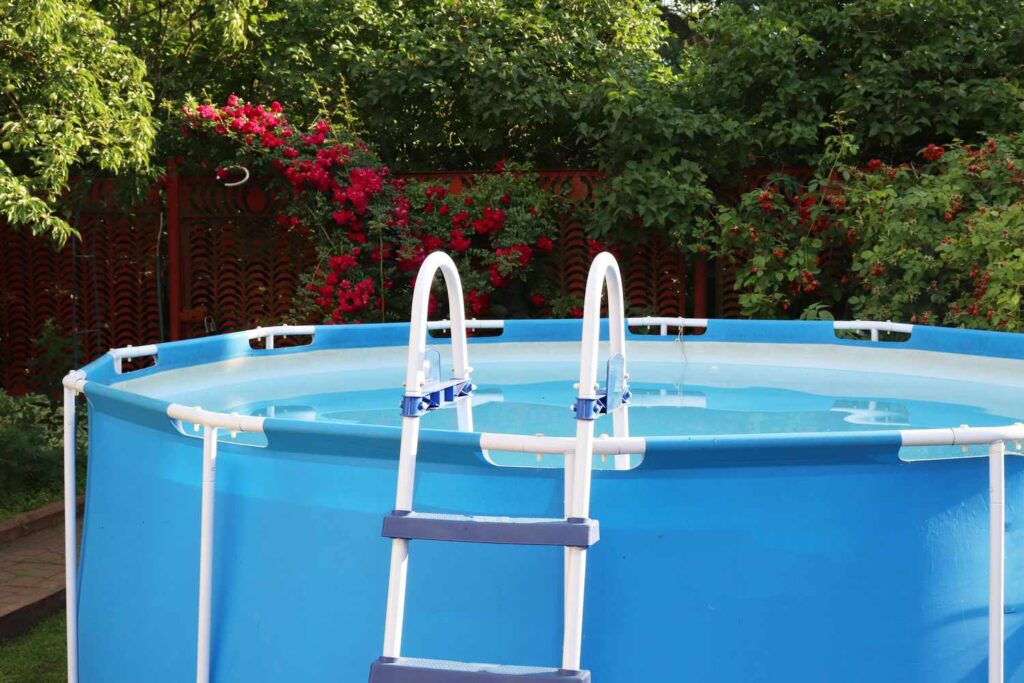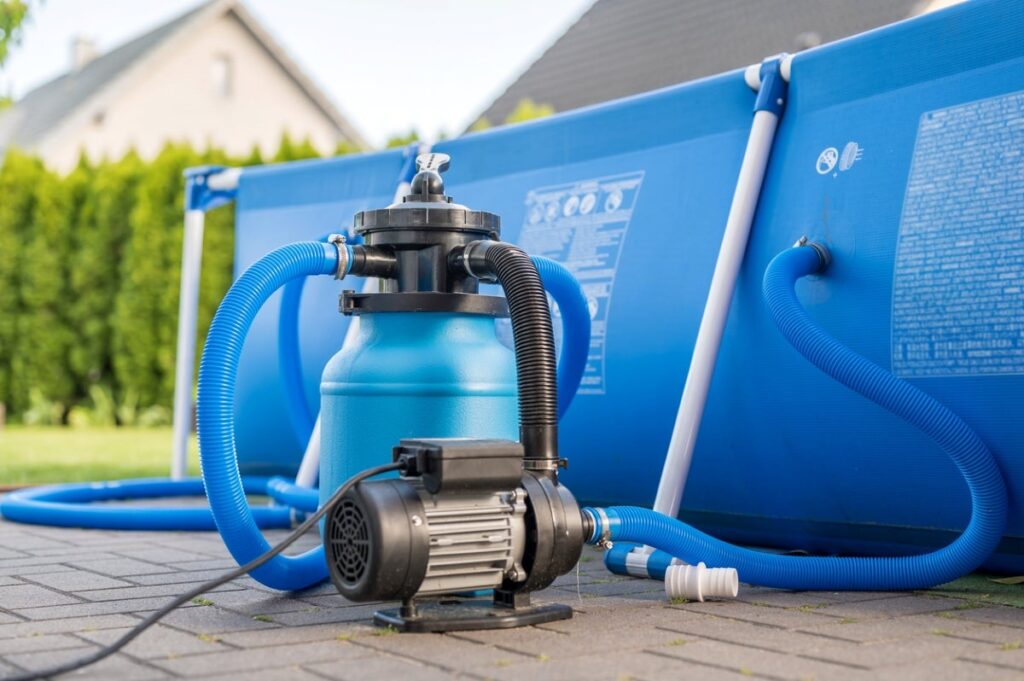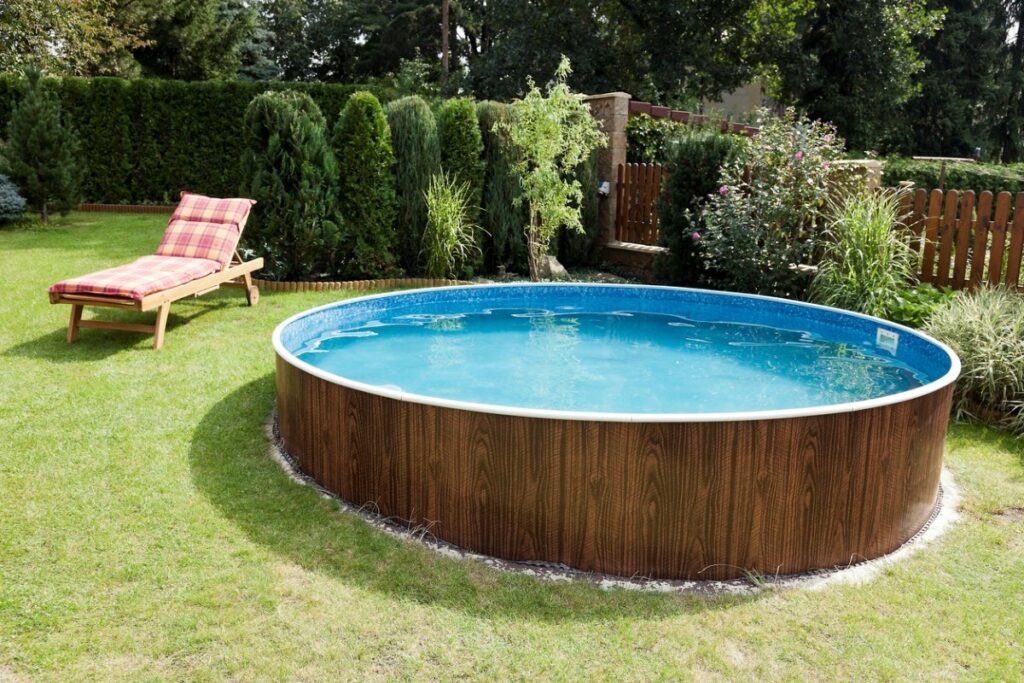If you want to keep your above ground pool clean and healthy, proper water circulation is key. Without it, debris and contaminants can build up, leading to cloudy water, algae growth, and potential health risks. In this article, you will learn the importance of maintaining proper water circulation in your above ground pool, as well as some helpful tips to achieve it. So, grab a towel and let’s dive into the world of pool maintenance!
1. Check and Clean the Pool Filter
1.1 Types of Pool Filters
When it comes to maintaining proper water circulation in your above ground pool, one of the most important tasks is to regularly check and clean the pool filter. There are several types of pool filters available, including sand filters, cartridge filters, and diatomaceous earth (DE) filters. Each type of filter has its own advantages and maintenance requirements, so it’s important to understand which type you have in order to properly care for it.
1.2 Regular Maintenance of the Pool Filter
Regular maintenance of your pool filter is essential for keeping your water clean and clear. This includes backwashing or cleaning the filter at least once a month, or more frequently if your pool sees heavy use. Backwashing involves reversing the flow of water through the filter, flushing out any debris and contaminants that have become trapped. In addition to backwashing, you should also inspect and clean the filter basket or cartridge as needed to remove any larger debris that may have bypassed the filter.
1.3 Signs of a Dirty or Clogged Filter
One of the key indicators that your pool filter may be dirty or clogged is a decrease in water flow or pressure. If you notice that the water in your pool is not circulating as effectively as it should be, it may be a sign that your filter needs cleaning. You may also notice an increase in the amount of debris or dirt in your pool, as a clogged filter is unable to effectively capture and remove these particles from the water.
1.4 Cleaning and Backwashing the Filter
Cleaning and backwashing your pool filter is a relatively straightforward process, but it is important to follow the manufacturer’s instructions for your specific type of filter. Generally, backwashing involves turning off the pump, changing the valve settings to the backwash position, and running the pump for a few minutes to flush out any debris. Following the backwash, you will then need to rinse the filter by changing the valve settings to the rinse position and running the pump again. This will help remove any remaining debris from the filter and return it to its normal operating state.
2. Monitor and Adjust Water Level
2.1 Importance of Proper Water Level
Maintaining the proper water level in your above ground pool is crucial for maintaining proper water circulation and overall pool health. If the water level is too low, the pump may not be able to draw in enough water to circulate effectively. On the other hand, if the water level is too high, it can cause problems with skimming and filtration, as well as potential damage to the pool equipment.
2.2 Checking the Water Level
Checking the water level in your pool is a simple task that should be done on a regular basis. You can use the markings on the side of the pool or a water level indicator to determine if the water is at the appropriate level. It’s important to note that the water level may naturally fluctuate due to evaporation, so it’s a good idea to check it regularly and make adjustments as needed.
2.3 Adding or Reducing Water in the Pool
If the water level in your above ground pool is too low, you can add water using a garden hose or other water source. Be sure to fill the pool slowly to avoid causing any disturbances to the water balance. On the other hand, if the water level is too high, you can use a submersible pump or simply drain some water out of the pool until it reaches the desired level. Just be sure to follow any local regulations regarding water drainage.
This image is property of www.thespruce.com.
3. Use Skimmer Baskets and Strainers
3.1 Purpose of Skimmer Baskets and Strainers
Skimmer baskets and strainers are essential components of your above ground pool that help to remove larger debris such as leaves, bugs, and dirt from the water. They are typically located at the waterline and act as the first line of defense in keeping your pool clean and clear. Skimmer baskets and strainers prevent these larger particles from entering the pool’s filtration system, helping to improve its efficiency and prevent clogging.
3.2 Cleaning and Emptying Skimmer Baskets
To ensure that your skimmer baskets are functioning properly, it’s important to clean and empty them regularly. Depending on the amount of debris in your pool, this may need to be done weekly or more frequently during times of heavy use or high debris levels. Simply remove the skimmer basket, empty the contents into a trash bag or compost bin, and rinse it out with a hose. Be sure to check for any cracks or signs of wear, as a damaged skimmer basket may not be as effective in capturing debris.
3.3 Maintaining and Repairing Skimmer Baskets
In addition to regular cleaning, it’s important to inspect your skimmer baskets for any signs of damage or wear. Over time, the constant exposure to chlorine and sunlight can cause skimmer baskets to become brittle or cracked. If you notice any damage, it’s important to replace the skimmer basket to ensure optimal performance. Additionally, be sure to keep an eye on the skimmer lid or cover, as these can become warped or damaged, preventing a proper seal and potentially allowing debris to bypass the skimmer system.
3.4 Ensuring Proper Installation of Skimmer Baskets and Strainers
Proper installation of skimmer baskets and strainers is crucial for their effectiveness in maintaining proper water circulation. Be sure to follow the manufacturer’s instructions for your specific model and ensure that the skimmer is properly secured to the side of the pool. It’s also important to regularly check the skimmer weir or flap, which helps to regulate the flow of water into the skimmer. Make sure the weir is moving freely and is not obstructed by debris or dirt.
4. Utilize Pool Brushing and Vacuuming
4.1 Benefits of Regular Pool Brushing and Vacuuming
Regular pool brushing and vacuuming are essential for maintaining clean and healthy pool water. Brushing the pool walls and floor helps to loosen and remove algae, dirt, and debris that may have settled on these surfaces. Vacuuming, on the other hand, is important for removing smaller particles that cannot be effectively removed through brushing alone. By incorporating these practices into your pool maintenance routine, you can ensure that your water remains clear and inviting.
4.2 Proper Brushing Techniques
When brushing your above ground pool, it’s important to use the proper technique to effectively remove debris and algae. Start by choosing a brush that is designed for your specific pool surface – whether it’s vinyl, fiberglass, or concrete. Use overlapping strokes and apply enough pressure to dislodge any dirt or algae, but be careful not to scrub too aggressively, as this can damage the pool surface. Pay close attention to areas that are prone to algae growth, such as corners, steps, and around skimmers.
4.3 Choosing and Using a Pool Vacuum
Choosing the right pool vacuum for your above ground pool is important for ensuring effective cleaning. There are several types of pool vacuums available, including manual vacuums, automatic vacuums, and robotic vacuums. Manual vacuums require manual operation and are typically connected to the pool’s filtration system. Automatic and robotic vacuums, on the other hand, are self-contained units that operate independently of the pool’s filtration system. Choose a vacuum that is designed for your specific pool type and follow the manufacturer’s instructions for proper use.
4.4 Vacuuming Frequency and Tips
The frequency of vacuuming your above ground pool will depend on several factors, including the amount of debris in your pool, the presence of algae, and how often the pool is used. As a general rule, it’s a good idea to vacuum the pool at least once a week to maintain optimal water clarity. However, during periods of heavy use or when the pool is exposed to excessive debris, more frequent vacuuming may be necessary. Be sure to take your time when vacuuming, and pay extra attention to areas that may have a buildup of debris or algae.
This image is property of empire-s3-production.bobvila.com.
5. Install an Efficient Pool Pump
5.1 Importance of an Efficient Pool Pump
An efficient pool pump plays a crucial role in maintaining proper water circulation in your above ground pool. The pump is responsible for drawing water from the pool, sending it through the filtration system, and returning it back to the pool. A properly functioning pump ensures that your water is properly filtered, helps to prevent the buildup of debris and algae, and allows for effective distribution of chemicals. Therefore, it’s important to select the right pool pump and ensure it is well-maintained.
5.2 Selecting the Right Pool Pump
When selecting a pool pump for your above ground pool, there are several factors to consider. The size of your pool, the turnover rate (the time it takes for the pump to circulate all the water in the pool), and the pump’s horsepower are all important considerations. It’s recommended to consult with a pool professional to determine the appropriate pump size for your specific pool. Additionally, look for energy-efficient options that can help save on electricity costs and reduce environmental impact.
5.3 Maintaining and Caring for the Pool Pump
To ensure that your pool pump operates efficiently, regular maintenance and care are necessary. This includes checking and cleaning the pump strainer basket, which collects larger debris that could clog the pump. It’s important to empty the basket regularly to prevent it from becoming overloaded and restricting water flow. Additionally, inspect the pump and all connecting hoses for any signs of leaks, cracks, or wear. Addressing any issues promptly can help prevent more serious problems down the line.
5.4 Signs of a Faulty Pool Pump
It’s important to be aware of the signs that your pool pump may not be working properly. If you notice a decrease in water flow or pressure, unusual noises coming from the pump, or the pump failing to start or stop, it may indicate a problem with the pump. Additionally, if you see visible leaks or notice that the motor is overheating, these could also be signs of a faulty pump. If you suspect any issues with your pool pump, it’s best to consult with a professional to identify and address the problem.
5.5 Troubleshooting Common Pool Pump Issues
While some pool pump issues may require professional assistance, there are a few common problems that you may be able to troubleshoot yourself. For example, if you notice a decrease in water flow, it could be due to a clogged filter or pump basket. Cleaning these components as discussed in section 1.4 may help resolve the issue. If the pump is making loud or unusual noises, it may be due to a worn or damaged impeller, which can be replaced by a professional. However, if you’re unsure about how to address a pump issue, it’s best to consult with a pool professional for guidance.
6. Maintain Proper Water Chemistry
6.1 Balancing pH Levels
Maintaining proper water chemistry is essential for ensuring clean and safe swimming conditions in your above ground pool. One of the most important aspects of water chemistry is balancing the pH levels. pH measures the acidity or alkalinity of the water, and ideal pH levels for pool water range from 7.2 to 7.8. To adjust the pH, you can use pH increasers or decreasers, depending on whether the pH needs to be raised or lowered. Keeping the pH within the proper range helps to prevent scaling, corrosion, and promotes effective sanitization.
6.2 Regular Testing of Water Chemistry
Regularly testing the water chemistry in your above ground pool is a critical step in maintaining proper water circulation and a healthy swimming environment. There are several test kits available that allow you to measure pH, chlorine levels, alkalinity, and calcium hardness. It’s important to follow the manufacturer’s instructions for testing and make adjustments based on the results. Ideally, you should test the water at least once a week, and more frequently during times of heavy use or when the pool is exposed to excessive debris.
6.3 Adjusting Chemical Levels
In addition to balancing pH, it’s important to maintain proper levels of chlorine and other sanitizers, as well as alkalinity and calcium hardness. Chlorine is essential for killing bacteria and preventing the growth of algae, while alkalinity helps to stabilize the pH levels. Calcium hardness, on the other hand, prevents water from becoming corrosive or scale-forming. Depending on your specific water conditions, you may need to adjust these levels by adding the appropriate chemicals. Be sure to follow the manufacturer’s instructions and use caution when handling pool chemicals.
6.4 Adding Pool Shock and Algaecides
In addition to regular maintenance of pH and sanitizer levels, it’s also important to periodically shock your above ground pool. Pool shock is a concentrated form of chlorine that helps to kill off bacteria, algae, and other organic contaminants. Shocking the pool is especially important after periods of heavy use or when the water appears cloudy or green. Additionally, it’s a good idea to use algaecides on a regular basis to prevent the growth of algae. Algaecides come in liquid or granular form and are typically added to the pool water directly.
6.5 Monitoring and Preventing Algae Growth
Algae growth can quickly turn your above ground pool into an unwelcome green or cloudy mess. To prevent algae growth, it’s important to maintain proper water circulation, sanitizer levels, and use of algaecides. Regular brushing and vacuuming, as discussed in section 4, can also help to prevent algae buildup. Additionally, it’s a good idea to periodically shock the pool and ensure that the water chemistry is properly balanced. By taking these proactive measures, you can keep algae growth at bay and enjoy clean, clear water in your above ground pool.
This image is property of www.thespruce.com.
7. Regularly Clean Pool Surfaces
7.1 Removing Debris from the Pool Surface
Regularly cleaning the surface of your pool is essential for keeping the water clean and clear. Skimming the pool surface with a leaf skimmer or net helps to remove larger debris such as leaves, bugs, and other floating debris. It’s a good idea to skim the pool daily or as needed, especially during times of heavy debris or high winds. By removing surface debris promptly, you can prevent it from sinking to the bottom of the pool and potentially clogging the filtration system.
7.2 Cleaning and Maintaining Pool Walls
While regular brushing and vacuuming help to keep the pool walls clean, it’s also important to periodically clean and maintain the walls to prevent the buildup of algae and other contaminants. Depending on the type of pool surface, you may need to use a pool brush to scrub the walls or use a specialized pool wall cleaner. Be sure to follow the manufacturer’s instructions and exercise caution when using any cleaning products to avoid damage to the pool surface.
7.3 Scrubbing the Pool Floor or Base
Similar to cleaning the pool walls, it’s important to periodically scrub the pool floor or base to remove any dirt or algae buildup. Again, depending on the type of pool surface, you may need to use a pool brush or vacuum with a brush attachment to effectively clean the floor. Pay close attention to the corners, steps, and other hard-to-reach areas, as these are often hotspots for algae growth. By regularly scrubbing the pool floor, you can maintain a clean and inviting swimming environment.
8. Use Water Features and Aerators
8.1 Benefits of Water Features and Aerators
Water features and aerators not only add an aesthetic appeal to your above ground pool but also help to improve water circulation and oxygenation. Features such as fountains or sprayers create movement in the water, which helps to prevent stagnation and encourages better filtration. Aerators, on the other hand, introduce air into the water, which promotes oxygen exchange and helps to prevent the buildup of harmful bacteria and algae.
8.2 Incorporating Fountain or Sprayer Systems
Incorporating a fountain or sprayer system into your above ground pool is a great way to enhance its visual appeal and improve water circulation. These systems are typically installed at the edge of the pool and are connected to the pool’s filtration system. The water is pumped through the system, creating a cascading or spraying effect in the pool. This movement helps to prevent stagnant areas and encourages better filtration and distribution of chemicals.
8.3 Installing Pool Jets or Bubblers
Another option for improving water circulation and oxygenation in your above ground pool is to install pool jets or bubblers. Pool jets are adjustable nozzles that can be installed in the pool wall or floor, creating a strong current of water. This current helps to push debris towards the skimmer and promotes better distribution of chemicals. Bubblers, on the other hand, create a gentle bubbling effect, which helps to increase oxygenation and prevent stagnant areas. Both options can be customized to fit your specific pool and desired water flow.
This image is property of empire-s3-production.bobvila.com.
9. Address Pool Plumbing Issues
9.1 Importance of Proper Pool Plumbing
Proper pool plumbing is essential for maintaining effective water circulation and preventing issues such as leaks or blockages. The plumbing system in your above ground pool consists of pipes, valves, and fittings that carry water to and from the pool, as well as distribute it to various components such as the pump, filter, and return jets. It’s important to ensure that the plumbing is properly installed, free from leaks or damage, and clear of any blockages that could impede water flow.
9.2 Identifying and Repairing Leaks
Leaks in your pool plumbing can lead to a decrease in water pressure, wastage of water, increased water bills, and potential damage to the pool structure or surrounding areas. If you suspect a leak in your pool plumbing, it’s important to identify and repair it as soon as possible. Common signs of a leak include a sudden drop in water level, wet spots or water pooling around the pool, or hissing or gurgling sounds coming from the plumbing. If you suspect a leak, it’s best to consult with a professional to locate and fix the issue.
9.3 Clearing Blockages in the Pool Plumbing
Blockages in your pool plumbing can prevent water from flowing freely and effectively, leading to poor water circulation and potentially causing damage to the pool equipment. If you notice a decrease in water flow or pressure, it may indicate a blockage in the plumbing system. Common causes of blockages include debris, leaves, or even small animals that may have become lodged in the pipes. To clear a blockage, you can use a plumber’s snake, a pressure washer, or consult with a professional for assistance.
10. Seek Professional Help
10.1 When to Consider Professional Pool Maintenance
While regular DIY maintenance is important for keeping your above ground pool in good condition, there may be times when it’s necessary to seek professional help. If you’re unsure about how to properly maintain your pool or address specific issues, it’s best to consult with a professional pool maintenance service. Additionally, if you encounter more serious problems such as plumbing leaks, equipment malfunctions, or persistent water quality issues, it’s best to have a professional assess and resolve the problem.
10.2 Benefits of Hiring Pool Maintenance Services
Hiring a professional pool maintenance service can offer several benefits. Pool maintenance professionals have the knowledge, experience, and specialized equipment to properly care for your pool and address any issues that may arise. They can provide regular cleaning, maintenance, and chemical balancing, as well as troubleshoot more complex problems. By entrusting your pool maintenance to professionals, you can have peace of mind knowing that your pool is in good hands.
10.3 Choosing a Reputable Pool Maintenance Company
When selecting a pool maintenance company, it’s important to choose a reputable and trustworthy provider. Look for companies that are licensed, insured, and have a good reputation in the industry. Consider reading reviews and asking for recommendations from friends or neighbors who have used pool maintenance services in the past. Additionally, inquire about the services offered, pricing, and any guarantees or warranties provided. By choosing a reliable pool maintenance company, you can ensure that your pool is properly cared for and enjoy a stress-free swimming experience.
